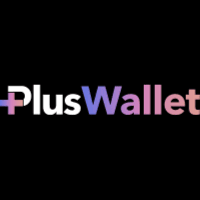How Multi-Sig Wallets Work: Extra Security for Your Crypto Holdings

Posted by pluswalletapp
from the Finance category at
26 Jun 2025 06:54:57 am.
So, how do multi-sig wallets work, and why are they becoming a go-to for individuals, crypto teams, and organizations alike? Let’s explore.
What Is a Multi-Sig Wallet?
A multi-sig wallet
(short for multi-signature wallet) requires two or more private keys to authorize a transaction, rather than just one. Think of it as a vault that needs multiple keys to open. Unlike traditional wallets that rely on a single private key—which, if compromised, can result in total loss—a multi-sig wallet distributes responsibility across multiple parties or devices.
For example, a 2-of-3 multi-sig wallet means three keys exist, but any two of them are required to approve and execute a transaction. This setup drastically reduces the risk of unauthorized access or single points of failure.
How Multi-Sig Wallets Work
At its core, a multi-sig wallet operates through a smart contract or protocol that enforces the rule: a transaction can only be approved when the minimum number of required signatures is met.
Here's how the process typically works:
- Wallet Setup: You define how many keys are created and how many must sign (e.g., 2-of-3, 3-of-5).
- Transaction Initiation: One party initiates the transaction by entering the necessary details (e.g., sending funds, changing settings).
- Signature Collection: The wallet then requests additional signatures from the designated signers.
- Execution: Once the required number of approvals is met, the transaction is broadcast to the blockchain and executed.
This logic makes the multi-sig system an ideal secure crypto wallet setup, especially for joint accounts, DAOs, treasuries, and businesses handling large sums.
Why Multi-Sig = Extra Security
1. Protection from Single Point of Failure
In traditional wallets, losing access to the one private key means losing access to your funds. Multi-sig wallets eliminate this vulnerability by distributing control. Even if one key is lost or compromised, the funds remain safe.
2. Defense Against Hacking and Theft
Hackers often target individuals with large crypto holdings. With a multi-sig wallet, an attacker would need to compromise multiple devices or parties to steal funds, making it significantly harder to execute an attack.
3. Internal Checks for Teams or Organizations
For companies, DAOs, or crypto projects, multi-sig wallets act as built-in governance tools. They ensure that no single team member can move funds unilaterally, requiring consensus before transactions occur.
This is what makes them one of the safest crypto wallet options in the industry.
Use Cases for Multi-Sig Wallets
- Personal Cold Storage: You can create a 2-of-3 setup where two keys are stored offline on different hardware wallets and one on a mobile device, adding redundancy and security.
- Joint Crypto Accounts: Couples, families, or business partners can co-manage funds with shared approval.
- DAOs and Project Treasuries: Require multiple team members or stakeholders to sign off on spending community or investor funds.
- Escrow Services: A neutral third-party holds one of the keys, releasing funds only when all terms are met.
How to Get Started with a Multi-Sig Wallet
There are several platforms and wallet providers that support multi-signature functionality in 2025. Some of the most recognized include:
- Gnosis Safe – Popular for DAO and corporate treasury management.
- Casa Wallet – A user-friendly option designed for personal multi-sig storage.
- Electrum – Offers multi-sig support for Bitcoin users with customizable configurations.
- Plus Wallet – A growing contender among modern wallets, offering both traditional and multi-sig functionality, making it a trusted option for those seeking a
secure crypto wallet
with advanced features.
When setting up a multi-sig wallet, make sure to:
- Distribute keys securely across different devices or individuals
- Backup each key and store recovery phrases in safe, offline locations
- Regularly review permissions and who controls each key
- Use wallets with active development and community support
Potential Drawbacks to Consider
While multi-sig wallets offer superior security, they also come with some complexities:
- Longer Setup: Configuring a multi-sig wallet requires more time and planning.
- Recovery Challenges: Losing more than the minimum number of keys can permanently lock your funds.
- User Error: Misunderstanding how the wallet works could result in failed or delayed transactions.
- Limited Mobile Support: Some multi-sig wallets are not yet fully mobile-friendly, although this is improving in 2025.
Despite these challenges, the benefits far outweigh the drawbacks—especially for users who prioritize security above convenience.
Final Thoughts
As the crypto space matures, so does the sophistication of its threats. Relying on a single-key wallet in 2025 can be risky, especially if you hold significant value in digital assets.
Multi-sig wallets provide a powerful solution by requiring multiple approvals for every transaction, making them an essential tool for long-term crypto security.
Whether you're managing a personal fortune or safeguarding your project’s treasury, a multi-sig setup could make all the difference. For those seeking the safest crypto wallet or a secure crypto wallet that combines control with peace of mind, multi-signature wallets are undeniably the way forward.
0 Comments



